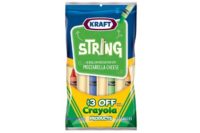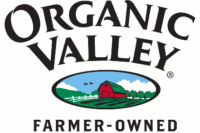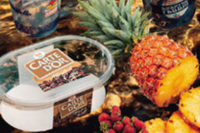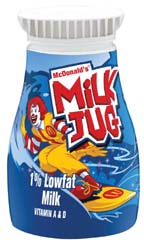
While the dairy industry knew an initiative to improve milk sales in foodservice had massive potential, and helped implement it, exponential increases in sales at both McDonald's and one of its competitors caught the attention of the Wall Street Journal and the NBC Nightly News in the fall.
McDonalds' sales went from 625,000 units a week to 4.24 million a week after new packaging was introduced in June.
At Cream O' Weber Dairy, Salt Lake City, this change offered a real opportunity to the company. According to Walt Kohl, operations mgr., "we knew we were positioned to do an excellent job supplying a quality product for McDonalds. The challenge to us was to quickly modify our packaging line to accommodate the new 8 oz. bottle design and the 24 and 48 count master shipper which McDonald's had specified. A new line design had to be engineered and developed to run this bottle. At the end of this line a new secondary packaging system was needed. The obvious solution was to package the product in boxes or trays, but we could be more cost competitive by using the Spot-Pak® package which Cream O' Weber was running in 12 packs for retail plastic milk bottles. The Spot-Pak® package could provide the additional cost advantage needed to earn the McDonald's business.
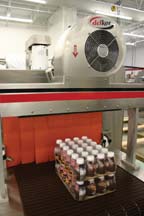
According to Peter Fox, Delkor's sales mgr. "when we were first contacted by customers that were competing for the McDonalds business, they wanted to pack the product in corrugated boxes. Our first reaction was why a corrugated box? When we evaluated the containers and sampled the product in the Spot-Pak® package, it performed extraordinarily well. Most of the Delkor bottle lines are packaging 6 or 12 count packages in a single layer so a multiple layer was new for us in bottle packaging. Our cup lines have been stacking product for years, so there were no serious design issues that had to be overcome. When Cream O' Weber and a few other dairies contacted us, we had our engineering completed on the new stacking bottle lines. As a result, we were able to deliver the equipment to Cream O' Weber in time for the start-up on the McDonald's project."
The Delkor equipment packages the 8 oz bottles at a speed of 400 bottles per minute onto a flat corrugated pad in a 4 x 6 pack pattern which is then double stacked to make the 48 count package. During the packaging process the bottles are held in place on the flat pad via a light temporary adhesive bond. Controlling 24 bottles on a flat pad would be very difficult without using the Delkor patented technology. This temporary bond also makes stacking very simple and the bottles and the base pad can be picked up as one unit. After the layers are double stacked the package is encapsulated with shrink film, followed by palletizing.
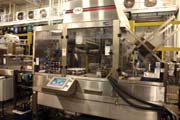
A primary driver of the Cream O' Weber's solution for McDonald's was the dramatic savings it offered in corrugated consumption. For the 48 count McDonald's Spot-Pak® package only 352 square inches of corrugated is required (two flat pads). For a comparable box with layer divider, total corrugated is 1,307 square inches, or nearly four times as much. This substantial difference in corrugated consumption also equated to a substantial difference in packaging material cost. For a 400 bottle/minute line, Delkor's Spot-Pak® package offered a $130 per hour savings over a box and a $75 per hour savings over using two trays double stacked.
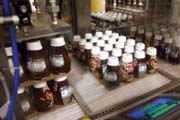
"We really had to think outside the box for this project", said Paul Jones of Cream O' Weber. Compared to boxes or trays, Delkor's solution offered not only packaging material savings, but also the benefit to McDonalds of source reduction. The handling and storage of packaging material at McDonalds is a big issue and we felt Delkor Spot-Pak® package offered by far the best fit.
Delkor Systems, Minneapolis, specializes in innovative secondary packa
